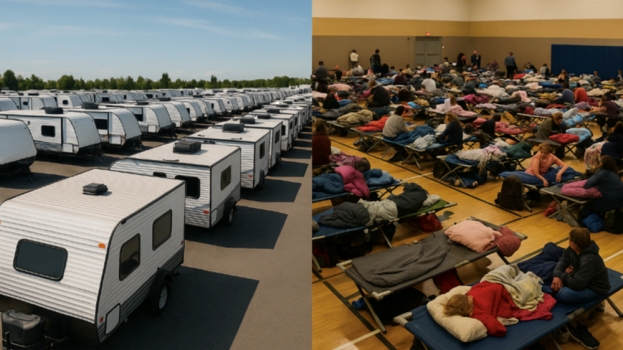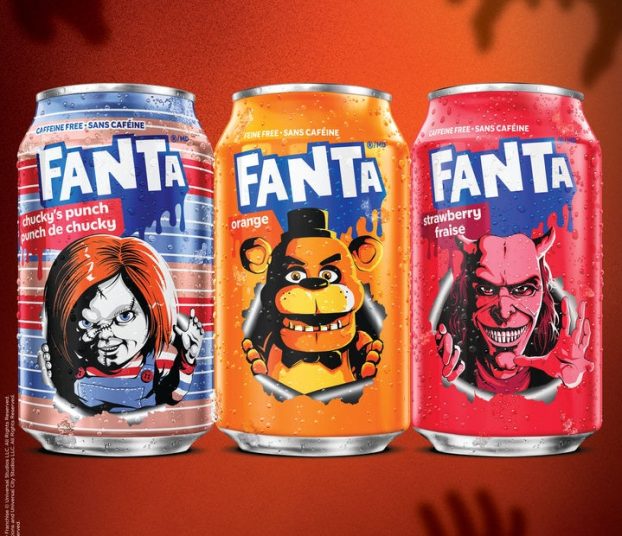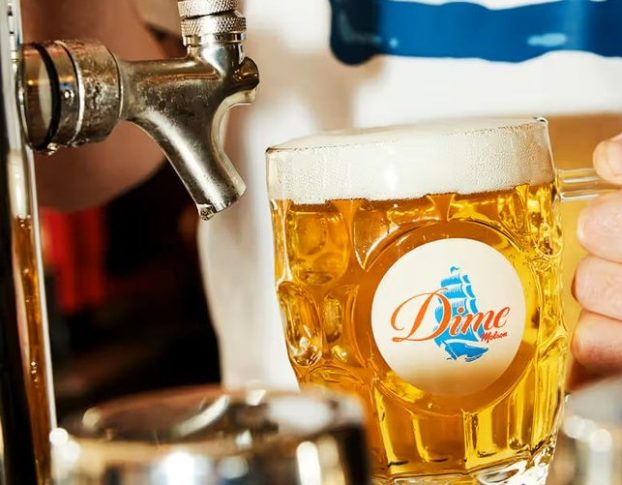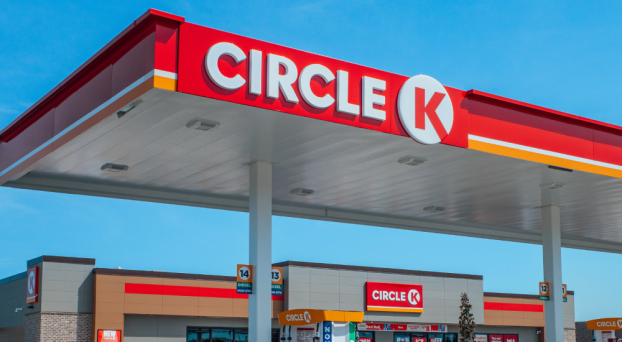 This story appears in the May 2015 issue of strategy.
This story appears in the May 2015 issue of strategy.
In the competition for the top marketing spot for this summer’s Pan Am Games, Katherine Henderson was clearly going for gold.
“I actually chased this one down myself,” she says of her position as SVP marketing and revenue for the Pan/Parapan American Games organizing committee.
For her, the lead up to this July and August’s events has been a marathon, not a sprint. Coming on board in mid-2010, just months after Toronto’s winning bid for the Games, Henderson has been working for nearly five years on making them a success.
But she’s been stretching her legs for this one for a while, developing a long history working with major sporting events.
A former senior marketing executive at Whirlpool, with previous positions at Campbell’s, Colgate-Palmolive and General Mills, she has activated sponsorships for amateur sporting events from the Commonwealth Games, Olympics and of course, Pan Am Games, to professional level leagues like the NHL, NBA and MLB.
She has also seen the benefit of amateur sports firsthand, being a mother of two kids who play sports competitively, she says. “I know, from a personal level, how important games are to developing infrastructure and providing an enriched experience for young athletes.”
So, when it was announced that the Games would be coming to Toronto, she knew she had to be a part of it.
“When you take on jobs like this, they’re not really jobs for the faint of heart,” she says, referring to the event’s size and scope. Hosted twice in Canada before this year, both times in Winnipeg – first in 1967, then again in 1999 – this year’s Games will be one of the largest multi-sport events in the country’s history.
It has involved building 10 new venues and significantly upgrading 15 more in Toronto and its surrounding regions, where the Games will be played.
In other words, it’s a pretty big deal.
Still, awareness was a challenge for the Canadian organizing team, with the Games not holding the same level of popularity here as they do in Central and South America, and even some parts of the U.S., Henderson says.
“The Pan Am Games are not as well-known a brand as the Olympic Games,” she says. “We don’t have the five rings, and when you see the five rings for the Olympics, you know exactly what you’re going to get.”
That means the past few years haven’t just been about marketing tickets – they’ve been about communicating what the event means in a larger sense for the communities involved, and also for Canada.
The more under-the-radar nature of the Games here did help Henderson and her team create a brand around what they now call the “People’s Games” – a more intimate, authentic experience for fans, and an event that serves the region. “[The Games are] for the people by the people,” she says. “It’s not quite the pomp and circumstance of maybe an Olympic Games.”
 The marketing team – which includes agencies, contractors and full-time staff, totalling about 50 people (with more coming on board during the Games) – took that approach to heart when it launched a campaign to crowdsource the Pan Am and Parapan Am mascot in 2013, opening a contest to kids across the country, asking them to come up with not just a face for the event, but a story behind it.
The marketing team – which includes agencies, contractors and full-time staff, totalling about 50 people (with more coming on board during the Games) – took that approach to heart when it launched a campaign to crowdsource the Pan Am and Parapan Am mascot in 2013, opening a contest to kids across the country, asking them to come up with not just a face for the event, but a story behind it.
The resulting Pachi the porcupine mascot has been used on much of the merchandise, with his 41 colourful quills representing the participating countries. Along with an e-commerce component, a dedicated temporary retail space in the Toronto Eaton Centre will sell the Games merchandise.
How the community will be shaped by the event, in terms of social impact and infrastructure development, was key for another part of Henderson’s job description – getting sponsors. As of the end of the 2014 fiscal year, sponsorship revenue was at $169.8 million (the most of any Pan Am Games), including cash and in-kind services, with a roster that includes major brands like Loblaw, Cisco, OLG, Chevrolet Canada, Coca-Cola, Esso and General Mills.
“You will be judged by the company that you keep” has been the phrase Henderson has been repeating to herself since coming on board, and the one she shares with her staff now. Her approach was about finding sponsors with “impeccable reputations” for ethical business and community building.
“We began with the end in mind,” she says. “I’m not just talking about revenue goals – what we were looking for were major companies, [with offices] here in Canada, who had a passion and an interest for helping us put on great Games and develop the region, who had tremendous marketing capabilities.”
When bringing CIBC on board, the lead partner on the event, the conversation began around understanding that the Games would have a real impact on the region.
Since becoming lead partner, the bank has launched a program called CIBC Team Next, putting $2 million behind supporting 67 aspiring athletes, as part of a commitment to a lasting sports legacy in Canada. It is also the presenting partner for Panamania, the Games’ arts and culture program, an important part of the event’s focus on integrating sport, culture and community.
Henderson’s team has also been working with Pattison Outdoor on out-of-home ads that will be used near the event venues in the Greater Toronto Area and Golden Horseshoe regions where the Games will take place, along with print and television advertising with other media partners like the Toronto Star, CBC and TLN. As of the end of 2014, Henderson’s team’s budget, including ceremonies, was projected to be $152 million of the $760-million operations budget.
Marketing the Games has also been about selling the destination. Partnerships with Tourism Toronto and the Ontario Tourism Marketing Partnership Corporation – which produced the “Invade” spot with FCB, featuring athletes descending on Toronto – have been key.
The Games’ marketing has also included a digital strategy by Toronto’s Fuse Marketing Group. The agency developed the Toronto 2015 site, which includes links to ticket and merchandise sales, and has been home to content highlighting the stories behind the Games. When the medals were released in March, for example, the site featured a video from sponsor Barrick Gold, produced by Q Media, following the journey of the gold, silver and copper mined for the hardware in Ontario, the Dominican Republic and Chile.
 The next major task underway has been the Games’ main site and spectator mobile app launching this month, which will feature ticket sales, scheduling, wayfinding features and competition results, along with information about what’s going on at the specific venues, says Garo Keresteci, CEO of Fuse Holdings.
The next major task underway has been the Games’ main site and spectator mobile app launching this month, which will feature ticket sales, scheduling, wayfinding features and competition results, along with information about what’s going on at the specific venues, says Garo Keresteci, CEO of Fuse Holdings.
The digital strategy has also meant shedding a light on infrastructure developments like the construction of new venues and the Athletes’ Village, along with the arts and culture components of the Games. “It really is this blending of art and science,” Keresteci says, noting that cultural components like Panamania have essentially equal billing to the sports listed on the site. “This is a sporting event but arts and culture and the legacy piece are prominently displayed because we think this will be transformative for Toronto.”
At this point, with the Games’ starting pistol trigger about to be pulled, and a finish line in sight, the long-term effects of the event are perhaps even more important for Henderson.
“I spend a lot of time thinking about what life is going to look like in the summer of 2015, but I probably spend equal the amount of time thinking about what life is going to look like in 2020,” she says of the Games’ impact on Toronto and the surrounding regions.
Ready or not, here it comes.























